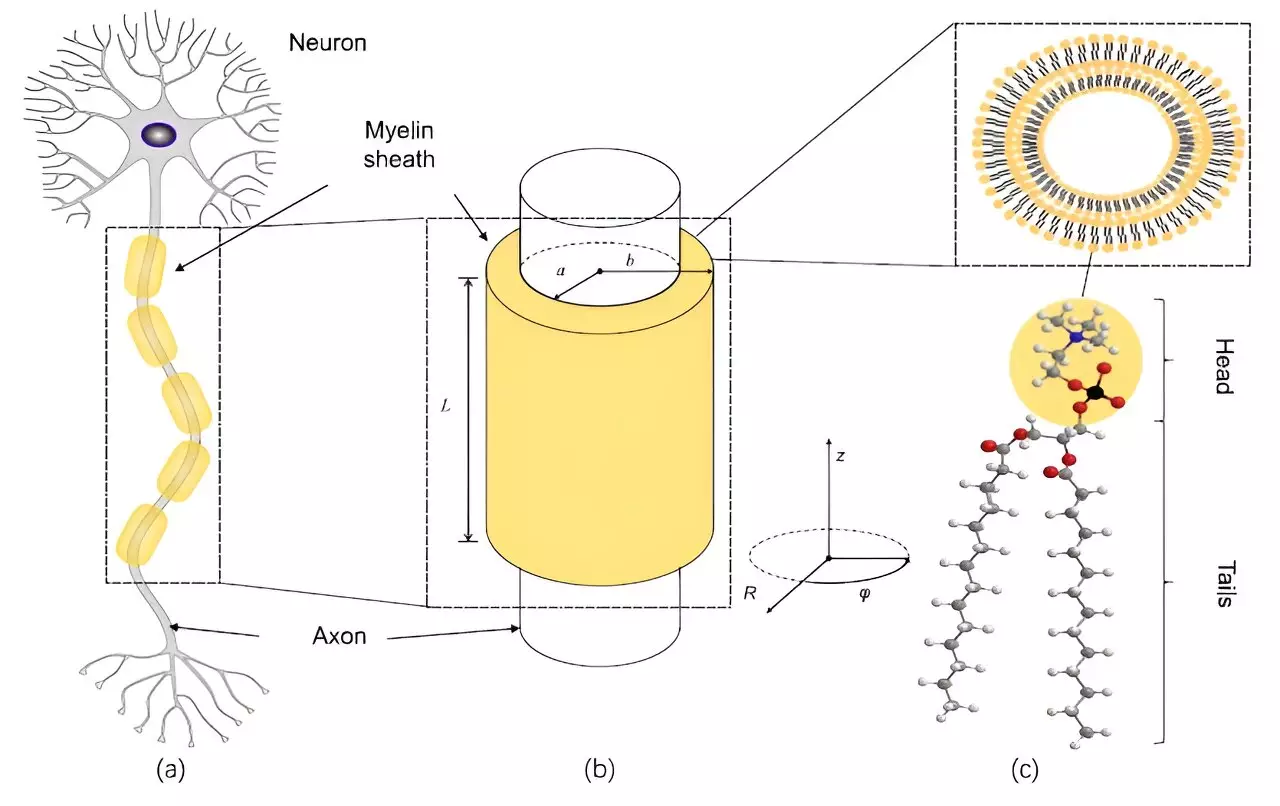Consciousness remains one of the most perplexing phenomena in science, often likened to an unsolvable puzzle. It is a topic that engenders discussions across disciplines—from philosophy to neuroscience—and yet, the mechanisms underlying conscious experience are still not fully understood. Recent theories have ventured into uncharted territories, suggesting that quantum mechanics, particularly quantum entanglement, could hold the key to unlocking the secrets of consciousness. This article delves into the astounding possibility that quantum entanglement might facilitate rapid communication within the brain, an area that has long baffled researchers.
Traditionally, the brain’s communication lies in the electrical signaling between neurons through synapses. These connections, called axons, are covered by the myelin sheath, a protective layer formed from lipid-rich tissue that insulates these fibers. The myelin sheath not only serves as an insulator but also plays a crucial role in shaping and providing energy to the axons. Generally measuring around 100 microns in length, the myelin sheath has tiny gaps that allow signals to propagate effectively. Despite its vital role, recent studies suggest that the rate of signal transmission along axons often seems too slow to account for the impressive synchrony observed in neuronal activity that underpins conscious thoughts and actions.
In light of this slow signal propagation—that can sometimes lag markedly behind other processes—the brain’s ability to function seamlessly is puzzling. This is where researchers, particularly a team in China led by Professor Yong-Cong Chen, have postulated that quantum phenomena might be critical. By examining whether entangled photons could exist within the myelin sheath, they aim to uncover a potential mechanism to facilitate instantaneous communication between neurons, presenting a groundbreaking perspective on neural coordination.
The research team investigated the relationship between axons and the myelin sheath, proposing that entangled photons could be generated within these structures. Their methods drew upon the principles of cavity quantum electrohydrodynamics, where the myelin sheath is treated as a perfectly conducting wall. By quantifying the electromagnetic fields within this scenario, they explored the conditions under which photon entanglement could occur.
Their findings suggest that the discrete modes of electromagnetic waves existing in this confined setting could lead to a higher rate of entangled photon production. As entanglement is a characteristic phenomenon of quantum physics where the state of one particle is inextricably linked with another, the implications of such a mechanism could transform our understanding of neuronal communication.
The proposed hypothesis posits that if entangled photons can facilitate communication, they may traverse along myelin sheaths connected to potassium ion channels within neurons. This insight invokes a radical shift in understanding how signals might synchronize across vast networks of neurons at a speed potentially surpassing traditional electrical signaling methods. In classical physics, the instantaneous influence of one particle on another over great distances—something observed with entangled particles—does not have a parallel, posing tantalizing questions about the unique interplay between consciousness and quantum mechanics.
However, it is crucial to approach these claims with a degree of caution. While the potential for lighter-than-sound or instant communication is exciting, these findings are preliminary. Chen and his colleagues have emphasized the need for further investigation into the processes that govern neural synchronization and their broader implications on neurobiology and consciousness itself.
The intersection of quantum physics and neuroscience offers a rich field of inquiry, inviting a reexamination of long-held notions about consciousness. This line of research strives not only to uncover possible mechanisms that enhance our understanding of neural synchronization, but also illuminates the enigma of consciousness itself. As these studies evolve, they prompt the scientific community to reconsider the fundamental nature of consciousness: Is it merely the result of intricate neuronal networks, or is there a more profound connection to the quantum realm that we have yet to fully grasp?
As our comprehension of quantum phenomena deepens and neuroscientific methodologies advance, the investigation led by Chen and his team could pave the way for groundbreaking revelations about the essence of human experience and cognition. Only time will tell if quantum entanglement is the missing link that demystifies consciousness and cements our understanding of the neural symphony orchestrating life’s complexities.


Leave a Reply